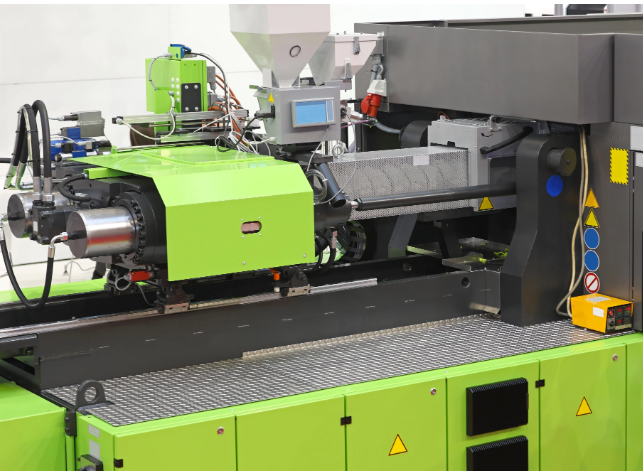Want to know the best part of plastic Manufacturing? Plastic is a synthetic material made from an assortment of organic polymers. The manufacturing procedure for plastic includes several steps, each of which plays a vital role in the final product manufacturing. In this blog, we will outline the steps involved in the plastic manufacturing process.
1. Polymerization: Polymerization is the first step in making plastic. Polymerization is the procedure of combining small molecules, called monomers, to form long chains called polymers. Polymers are the building blocks of plastic. Here, we have two main methods of polymerization:
Addition polymerization
Condensation polymerization.
2. Compounding: The resulting polymer should be compounded once the polymerization process is finished. Compounding includes adding various additives, like stabilizers, pigments, and lubricants, to the polymer to give it the desired properties.
3. Extrusion: The polymer is ready to be extruded after compounding. Extrusion is the process of melting the polymer and forcing it through a die to generate a precise shape. This process makes products like pipes, tubing, and sheets.
4. Injection molding: Injection molding is another procedure used to create plastic products. Using this procedure, the polymer is melted and injected into a mold. Once the polymer cools and solidifies, the mold is opened, and the product is removed. Injection molding generates various products, including automotive parts, toys, and medical devices.
5. Blow molding: Blow molding is a process that generates hollow plastic products, such as bottles and containers. In this process, a tube of molten plastic, a parison, is inflated with air to create the desired shape.
6. Thermoforming: Thermoforming is the next step that can help to create products such as trays and packaging. In this process, a sheet of plastic is heated until it becomes pliable, and then it is formed into the desired shape using a mold.
7. Recycling: Recycling is a significant step in the plastic manufacturing procedure. Recycled plastic can be used to make new products, reducing the need for virgin plastic. Recycling includes cleaning and melting the plastic and then reforming it into a new product.
Finally, the plastic manufacturing process may consist of several steps, each of which is critical in producing the final product. From polymerization to extrusion, injection molding, blow molding, thermoforming, and recycling, each step is significant in creating several plastic products we use daily.
The stepwise procedure of plastic Manufacturing?
Here is a step-by-step procedure for plastic Manufacturing using the injection molding process:
1. Designing the Mold: The first step in plastic manufacturing is designing the mold. A mold is a 3D object that will be used to shape the plastic into the desired product.
2. Preparing the Polymer Material: Polymer material (typically in the form of pellets or granules) is then prepared by mixing it with additives such as colorants, stabilizers, and lubricants to improve its properties.
3. Melting and Injecting: The polymer material is then melted and injected into the mold at high pressure. The mold is then clamped shut, and the plastic is left to cool and solidify within the mold.
4. Ejection: Once the plastic has solidified, the mold is opened, and the product is ejected from the mold using ejector pins. The product is then trimmed and finished to remove any excess material or imperfections.
5. Quality Control: Finally, the product is inspected for quality and tested to ensure that it meets the desired specifications. The product is packaged and shipped to customers if it meets the required standards.
Note: The specific steps and process might vary according to the plastic manufacturing process utilized. Eventually, the other processes may include blow molding, extrusion, and thermoforming.
Neoplastic’s exclusive service:
We make customized injection molding plastic parts, irrespective of size and shape using various grades of plastic ranging from general purpose plastics to engineering grade plastics.
Specialized in making safety caps/plug across the industries, which helps in cost saving, avoiding part damages, protection from dust & rust etc…
Here are some advantages of using protective caps in plastic manufacturing companies:
On Productivity:
Cost-Effective: Protective caps are a cost-effective safety solution for manufacturing companies. They are easy to use, require minimal effort, and can be reused. Additionally, the cost of providing plastic protective caps is often less than the cost of damaged parts or rejection of the lot.
Safe transportation: Manufactured products can be safely transported to the destination without damaging the threaded parts & protection from dust using these protection caps.
Versatility: Protective caps are available in a variety of materials and designs to meet the needs of different manufacturing processes. For example, caps are designed to protect Threaded (Male/Female) parts, through holes, valves & machined surfaces.
In conclusion, protective caps are an essential safety component in manufacturing companies. By investing in protective caps, companies can do a lot of cost & time saving, avoid part damages and rework & majorly avoid dust and rust on the critical parts. Reach us today! Neoplastics provides you with an extensive source for plastic product manufacturing needs for your businesses or Industries.
FAQ:
1. What are the different types of plastic manufacturing processes?
There are numerous different types of plastic manufacturing processes, including injection molding, insert molding, over molding, blow molding, extrusion, thermoforming, and rotational molding, among others.
2. What types of products can be made using plastic manufacturing processes?
A wide range of products can be made utilizing plastic manufacturing processes, including automotive parts, industrial parts, caps/plugs, toys, medical devices, packaging, bottles, containers, and much more.
3. What is the difference between virgin plastic and recycled plastic?
Virgin plastic is made from new, raw materials, while recycled plastic is made from already used and then processed to create new products. Recycling plastic reduces the need for virgin plastic in various industries and helps to reduce plastic ending up in landfills.
